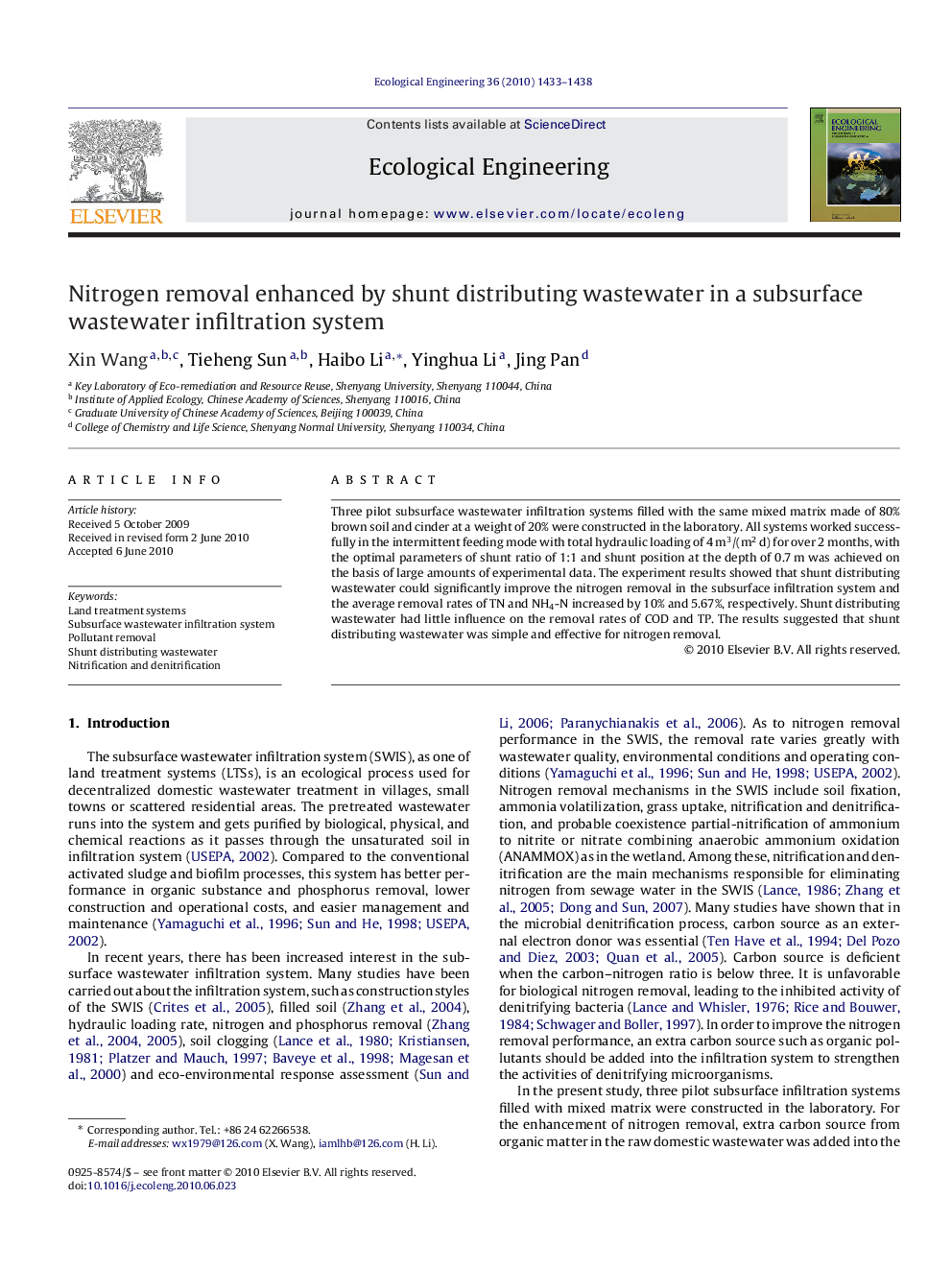| Article ID | Journal | Published Year | Pages | File Type |
|---|---|---|---|---|
| 4390593 | Ecological Engineering | 2010 | 6 Pages |
Abstract
Three pilot subsurface wastewater infiltration systems filled with the same mixed matrix made of 80% brown soil and cinder at a weight of 20% were constructed in the laboratory. All systems worked successfully in the intermittent feeding mode with total hydraulic loading of 4Â m3/(m2Â d) for over 2 months, with the optimal parameters of shunt ratio of 1:1 and shunt position at the depth of 0.7Â m was achieved on the basis of large amounts of experimental data. The experiment results showed that shunt distributing wastewater could significantly improve the nitrogen removal in the subsurface infiltration system and the average removal rates of TN and NH4-N increased by 10% and 5.67%, respectively. Shunt distributing wastewater had little influence on the removal rates of COD and TP. The results suggested that shunt distributing wastewater was simple and effective for nitrogen removal.
Keywords
Related Topics
Life Sciences
Agricultural and Biological Sciences
Ecology, Evolution, Behavior and Systematics
Authors
Xin Wang, Tieheng Sun, Haibo Li, Yinghua Li, Jing Pan,
